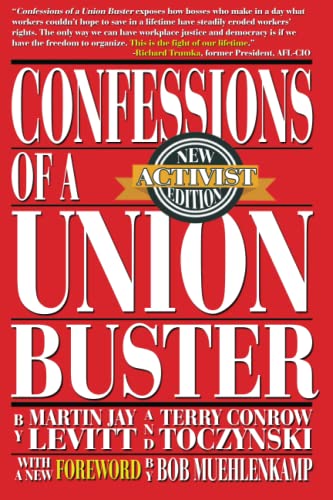In this article, Marcus Baram of Capital & Main describes a surprising alliance between a veteran labor organizer and his chief nemesis, a man who was a master of union-busting.
He begins:
They were certainly an odd couple, the unlikeliest of allies: the union organizer and the notorious union buster. Bob Muehlenkamp, a stalwart of the modern-day labor movement, has coordinated hundreds of union organizing campaigns and was the organizing director of the Teamsters and SEIU 1199, the hospital workers union. Martin Jay Levitt, a master of corporate skulduggery, did everything he could as a consultant hired by hundreds of companies to intimidate workers into not joining a union. Once, during an organizing effort marked by threats of violence at one of the country’s biggest hospital systems, Muehlenkamp was handcuffed and arrested for trespassing, Levitt relishing another victory as employees voted not to join a union. They were on opposite sides, fighting tooth and nail, for close to 20 years.

Until Levitt had a change of heart, and in the late 1980s reached out to Muehlenkamp about his desire to write a book exposing the dirty tricks of the union-busting industry. Levitt’s Confessions of a Union Buster was published in 1993 and immediately made waves, with Levitt appearing on 60 Minutesand giving lectures around the country to denounce his former colleagues and confess his sins. “Union-busting is a field populated by bullies and built on deceit,” he wrote. “The only way to bust a union is to lie, distort, manipulate, threaten and always, always attack.” He described how his former firm, Modern Management Methods, had developed a methodology for breaking down employee support for unions by using psychological tactics and turning managers into anti-union spokespersons.
His new career as a reformer earned him enemies on both sides — panicking his old colleagues in the union avoidance consulting industry and arousing skepticism among former nemeses in the labor movement, one of whom called him a “cheesy hustler.”
Levitt wrote about his insatiable greed, his alcoholism, a rap sheet that included forgeries, check fraud and arson, and multiple illegal activities on behalf of some of America’s biggest companies. Critics called him an opportunist, but some labor veterans, including Muehlenkamp, saw him as an important ally who could help them learn how to combat the union busters.
Levitt was a complicated penitent — just months after the book was published, he went to jail for obtaining credit by false pretenses — and he passed away in 2004 without having won over that many of his former antagonists.
But his seminal book has served as a guide for union organizers and their allies. Levitt describes how his former industry benefited enormously from a 1950s-era loophole in labor law that allowed companies to hire anti-union consultants without disclosing those arrangements — one of the “enormous, gaping errors in the law that have left room for a sleazy billion-dollar industry to plod through,” Levitt wrote. That loophole was closed in 2016 by the Department of Labor, finally shedding light on an industry paid an estimated $340 million a year by companies. The labor victory was short-lived — just a few years later, the loophole was reopened by the Trump administration, and the Biden administration has yet to take action.
The book is being reprinted, with a new introduction and appendix by Muehlenkamp, who writes that “it documents the dirty underside of how U.S. corporations, who routinely bargain with unions in other countries, attacked and weakened American democracy. The question is, what can we do about it? We know how to have the best chance at beating the union busters. It starts with reading Levitt’s book. Know the enemy and take them as seriously as they take a union.”
Muehlenkamp talked to Capital & Main about his experiences in the movement, knowing Levitt as enemy and ally, and what he sees as the biggest challenges facing unions today.
Note: This interview has been edited for length and clarity.
To read the interview, open the link.

Reblogged this on Lloyd Lofthouse and commented:
Learn from a former scheming, crooked, master enemy of labor unions how corporations lie, cheat, and manipulate to bust labor unions or keep them out.
If the pandemic has shown us anything, it is that labor provides value to employers. Employers will only recognize this if labor organizes. Employers are more than happy to undervalue labor as they can make greater profits. Hyper capitalism has deliberately kept wages low so that corporations can continue to buy back their stock and artificially pump up the value of their stock at the expense of the American worker. Our extreme income inequality is the result. Labor must push back against this trend even if it means learning from a former enemy of organized labor.